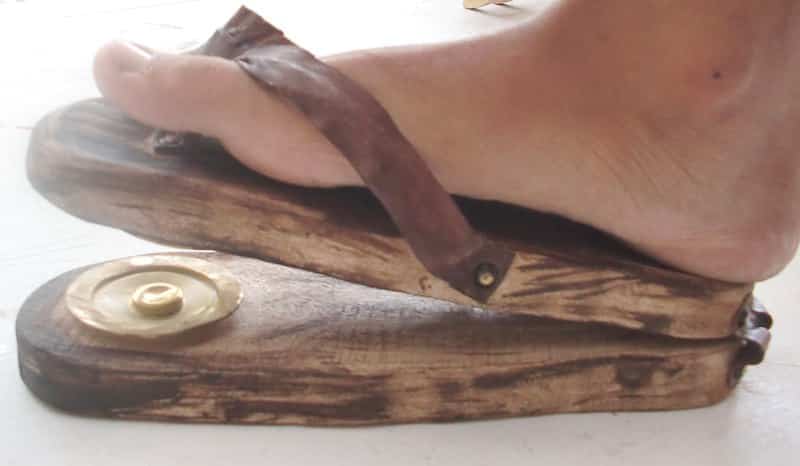Ancient Rome was full of art, theater, and music. Roman musicians would be present at parties and important events. They would also be used in rituals and on the battlefield. Many of the instruments used in Rome were invented by other cultures.
In this post, we’re going to take a look at some of the most interesting Roman musical instruments to come out of this time period.
1. Lute (Pandura)

The Lute, known as the Pandura to the Romans, was a stringed instrument that looked similar to a modern-day guitar.
It most likely had four strings that were played by pushing down on the fretboard and strumming with the fingers.
This instrument was likely invented in Mesopotamia or ancient Egypt and then adopted by the Romans for its melodic sounds.
The Lute itself was rather rare but would be brought out for special occasions.
2. Lyre
Adopted by the Romans from the Greeks, the Lyre was another string instrument found in ancient Rome.
The lyre somewhat resembles a harp, although it is very different. Lyres were often made with wood, but in special circumstances, could be constructed from tortoise shells and animal horns.
It was played by cradling the instrument in one arm while the strings were plucked by the other hand.
The lyre is mostly found in early Roman history as their taste in music and instruments evolved over time. The lyre was used for all sorts of different events but is often associated with parties and libations.
3. Cithara (Kithara)
The Romans eventually moved away from the lyre in favor of the Cithara or Kithara as it’s also known.
An iconic sound of roman music, it is very similar in shape and sound to the lyre but was larger and louder.
What made the cithara more desirable was the ability to precisely tune the strings, even mid-performance as shown in the video above.
The cithara was widespread in Roman society as it was played by both commoners and at high-class functions. There are even Roman stories of the cithara being played so beautifully that it would make people cry.
Musicians who could play the cithara well were often revered in Roman society and would be treated with respect.
4. Syrinx or Pan Flute
One of the most commonly used wind instruments in Rome was the Syrinx or as it’s known in more recent times, the Pan Flute.
The syrinx is made up of multiple hollow tubes that are tied together. They gradually increase in length and size to create different pitches as each pipe is blown. The longer the pipe, the lower the pitch of the note.
The pipes themselves were often made from wood or reeds, but in rare circumstances, could be made of metal or ivory. The latter would be reserved for important players or ceremonies, while syrinx made of wood and reeds would be much more common.
The syrinx originally came from the Greeks and Etruscans but was used heavily in Rome.
This instrument was easily made and accessible, meaning that it was also found outside of major cities. It may have even been a household instrument.
5. Roman Tuba
The first wind instrument on our list, the Roman Tuba looks more like a horn than the modern tuba. That’s because the name tuba comes from the Latin “tubus” which means tube or pipe.
It consisted of a hole to blow into and a long straight tube that gradually widened into a flared opening at the opposite end of the instrument.
Typically they were made out of bronze, so it had a sound quality similar to a straight trumpet used today.
The Roman tuba was often detachable as the instrument could be over a meter long, making it difficult to carry around.
Since there were no valves, the Roman tube could only play notes in the harmonic series.
This instrument was probably used in several situations, but the most common was during battle to signal different maneuvers. It was also used at spectacle events such as the games at the Colosseum.
6. Cornu
The Cornu was a Roman instrument similar to the tuba except for one major difference. It was literally wrapped around the musician’s body more like a sousaphone!
At one end was a conical bore similar to a French horn that served as a mouthpiece and a small bell opening at the opposite end.
Like the Roman tuba, the cornu had no valves and therefore was only able to play notes in the harmonic series.
The cornu was used on the battlefield and at spectacle events. There is also evidence that the cornu would be used during parades to indicate that someone important was approaching.
7. Tibia (Aulos)
The Tibia, also known as an Aulos, was one of the most unique wind instruments used during Roman times. This is because the instrument consisted of two pipes played at the same time.
It is likely the tibia was a reed instrument, and although the two pipes were not physically connected, they were played together using a single mouthpiece.
This mouthpiece held the pipes in place and allowed air to pass through both flutes at the same time.
Due to the fact that it was a double-reed instrument, the sounds the tibia created were most likely similar to the modern-day oboe.
8. Scabellum
The Romans enjoyed their percussion instruments which may have been because they were widely available and could accompany dancing.
One such percussion instrument was the Scabellum which was uniquely not played with the hands, but with the feet.
The instrument looked like a wooden sandal that was made of two parts connected by a hinge on the back of the instrument.
Attached to the front of the scabellum were two small cymbals that clashed whenever the musician put their foot down. It was like the original hi-hat!
The scabellum was used to designate the rhythm and tempo of a song but was also likely used as accompaniment during dancing or parties.
9. Cymbalum
Another roman percussion instrument that was common were cymbals which were known asCymbalum.
There were lots of different sizes but one type was called the Cymbala which were quite similar to scabellum.
But, the main difference was that the cymbala were played with the fingers instead of the foot.
These tiny cymbals were made of metal disks that were tied to the fingers using string or ribbon. They would clash together to make a clanging sound in time with the music.
This instrument could be worn by dancers and played to add an additional dimension to their performance.
10. Crotalum
Crotalum were the Roman version of castanets. This percussion instrument was made of a pair of concave shells or pieces of wood that were joined together by a string.
The musician would often hold two crotalums, one in each hand with the string wrapped around their thumb. They would then be brought together in each hand to produce a clicking sound.
This was often a form of accompaniment used during dances much in the way that castanets are used in flamenco music.
The interesting thing is that, based on the size and shape of the crotalum, each instrument could create a different pitch.
11. Tympanum
Next we have the Tympanum which was very similar to a tambourine consisting of a wooden frame that was covered on one side by animal skin.
It was likely beaten with the palm of the hand or a stick in the middle of the drum to create a low tone or slapped around the edges to give the instrument a higher pitch.
This drum had a special connection to Dionysus, so it is often depicted in scenes and art dedicated to the god.
This also suggests it would be used at parties and any ceremony that included drinks, as Dionysus was the goddess of wine and fertility.
12. Sistrum
The Sistrum is most often thought to be an Egyptian musical instrument, but it was used in Rome as well.
This instrument was a type of rattle that included strings wrapped around a cross-bar and a metal frame.
When it was shaken, small rings of metal wrapped around the instrument’s crossbars clanked together to make a sound similar to a series of tiny cymbals.
Sistrums were mostly used for ritual purposes and was not a part of everyday life.
13. Hydraulis
The final Roman instrument on the list may be the most impressive of all as it was a technological marvel.
The Hydraulis looked like a simple organ and consisted of different-sized pipes.
Some historians think that early versions of the instrument were literally blown into to create sounds, or by using some sort of device that resembled a bellow. Eventually, the hydraulis evolved to have a tank below it.
Water was pumped into the tank, which forced air to be pushed up through the pipes of the instrument to create sound.
Basically, the ancient Greeks and Romans constructed an instrument thousands of years ago that was similar to the pipe organs of today.
Summing up our List of Roman Instruments
The Romans borrowed a lot of their musical instruments from other cultures, but it is clear that music was important to them.
We know what types of instruments were used in Rome from their art, writings, and archeological evidence.




